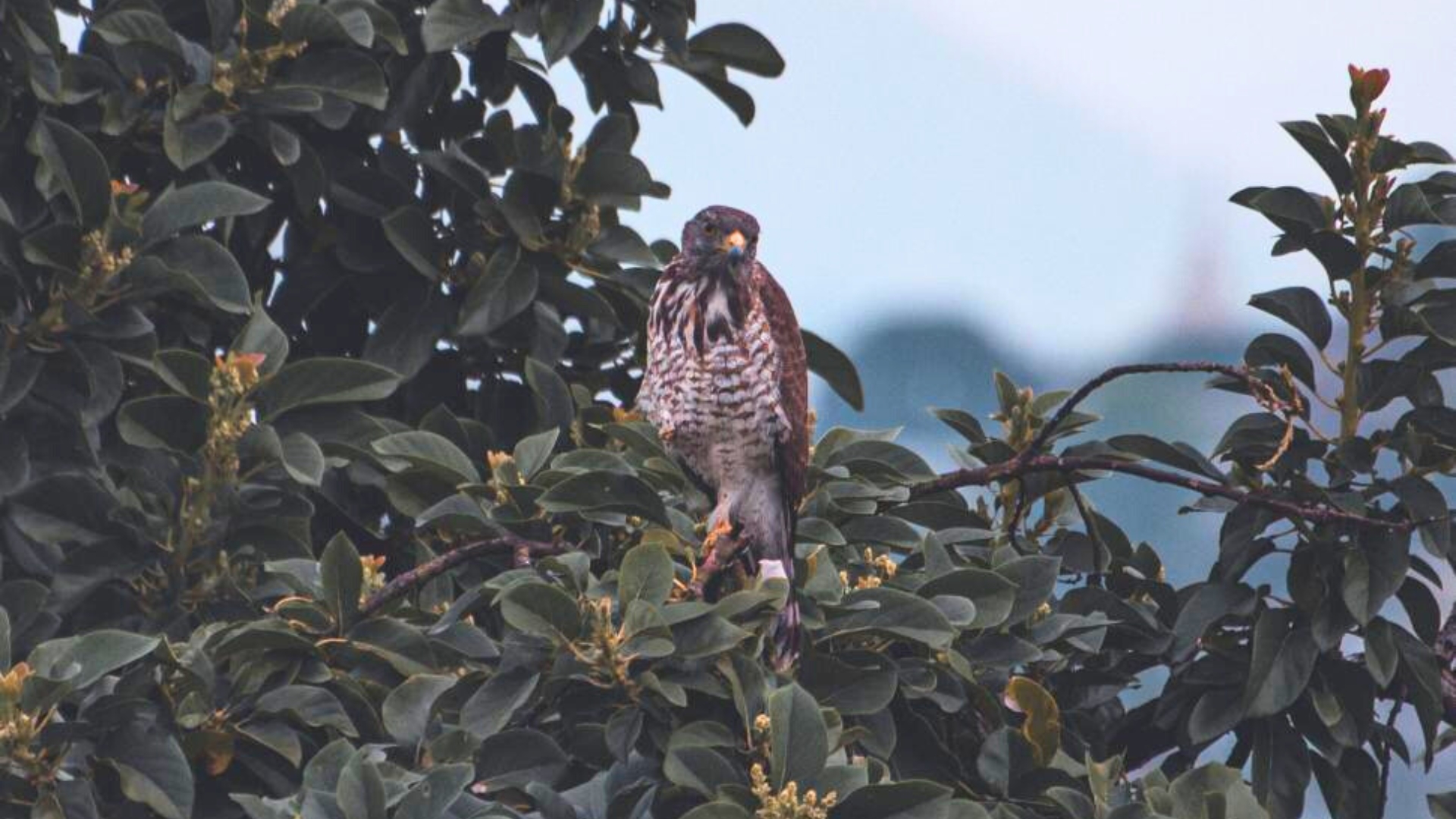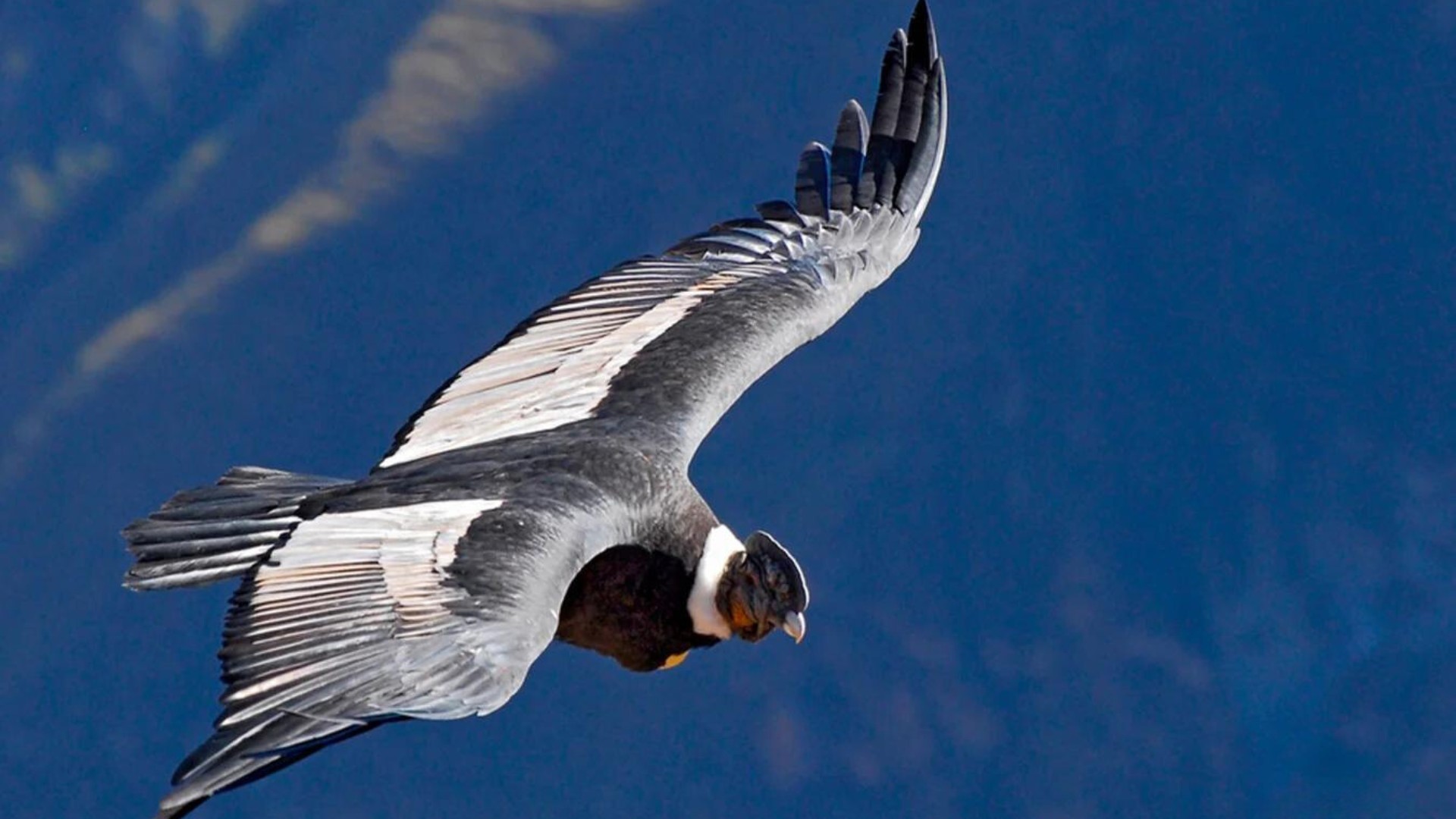

Birdwatching is an outdoor activity that involves observing and studying birds in their natural habitat. This hobby is pursued for leisure and focuses on recognizing different species of birds by their plumage, song, colors, and behaviors.
Birdwatching, while a leisure activity, helps identify possible changes in the natural environment of the observed species. It is possible to detect problems such as habitat destruction or pollution.
If you are just starting with birdwatching, it is important to have basic equipment to make birdwatching in Machu Picchu a rewarding activity.
The location of Machu Picchu enables the sighting of a wide variety of birds. In the 37,000 hectares of the Machu Picchu Historical Sanctuary, nearly 420 different bird species have been recorded to date. However, it is likely that a visit to the Inca city alone may not allow for bird sightings, which is why it is advisable to take a hiking route such as the Inca Trail for easier bird observation.
The Black-and-chestnut Eagle (Spizaetus isidori) is considered one of the most imposing and majestic birds inhabiting the Machu Picchu Sanctuary. This bird of prey has dark plumage with chestnut patches on its chest.
In its habitat, it can be found at the highest points of trees searching for prey. Its sharp vision allows it to detect prey from great heights, while its agility in flight provides an undeniable advantage.
The population of this bird has been affected by indiscriminate hunting, however, it is still possible to find them in the natural reserve of Machu Picchu, and occasionally, to observe them flying over the Inca citadel.
The Andean Hawk (Geranoaetus polyosoma) is easy to find in the Historical Sanctuary of Machu Picchu during the winter season as it migrates to this area. It can be identified by its mottled brown plumage.
This bird of prey finds Machu Picchu an ideal location for foraging. Its sharp vision allows it to easily locate rodents and small prey, even through the dense mist of the natural reserve. It is possible to see them soaring over the citadel of Machu Picchu, although it is not very common as they prefer to hunt deep in the jungle.
The Andean Condor (Vultur gryphus) is a representative bird of Peru, considered the owner of the Andes due to its large size and imposing presence. Its dark plumage and incredible flight have made it a national symbol of Peru, as well as playing an important role in Andean mythology and history.
These birds inhabit mountainous areas with large air currents that allow them to maintain flight. Occasionally, if one is lucky, it is possible to observe the Andean condor flying around the Inca citadel, but it is even more likely to see it soaring at the highest points of the Inca Trail.


The Masked Fruiteater (Pipreola pulchra) is an endemic bird of the Andes, which inhabits the Vilcabamba range, also encompassing the Historical Sanctuary of Machu Picchu.
This small, plump green bird is easily spotted in the mid-levels of the humid forest where fruit trees abound, which are its primary source of food. Males typically have an orange bill and a yellow-orange collar, while females are completely green with a dull orange bill.
The Andean Cock-of-the-rock (Rupicola peruviana), designated as the national bird of Peru, is considered one of the most beautiful birds in the world. Its body is covered with black feathers, its wings are grayish, and it is distinguished by the plumage of its head, which is a bright orange in males and a duller brownish orange in females.
The Andean Cock-of-the-rock (Rupicola peruviana), designated as the national bird of Peru, is considered one of the most beautiful birds in the world. Its body is covered with black feathers, its wings are grayish, and it is distinguished by the plumage of its head, which is a bright orange in males and a duller brownish orange in females.These birds are known as seed dispersers of fruit trees, which constitute their main diet, making them a fundamental part of the Machu Picchu Sanctuary's ecosystem. Currently, it is believed that there are only about 3,000 individuals left, making their conservation critically important.
The Masked Trogon (Trogon personatus) is a bird that inhabits the cloud forest of Machu Picchu, serving as a seed disperser as it feeds on fruits that are still on the trees. It is possible to see the Masked Trogon near Aguas Calientes, the town closest to Machu Picchu.This bird has black plumage with a red breast and a black tail with white-tipped feathers. Males have iridescent green plumage on their heads and a black mask around their eyes, whereas females have a brown head, a black mask, and a very noticeable white ring around their eyes.
The Andean Motmot (Momotus aequatorialis) inhabits forested areas at the edge of the subtropical zone, such as the Machu Picchu Sanctuary. They are often seen in pairs, though it is also possible to spot them alone, and they are known to frequent populated areas.This bird is omnivorous, feeding on small vertebrates like frogs and lizards, as well as fruits. The Andean Motmot is noted for its singing; they can perform duets where they combine their calls in a series of rapid notes.
The Andean Guan (Penelope montagnii) resembles a domestic chicken but is found only in the Andean forests. Both males and females have the same dark brown plumage with white accents, as well as bluish-gray rings around their eyes.These birds inhabit clouded and humid forests and spend most of their time in small groups in the trees, where they feed on ants, fruits, and wild berries. Their population has been slightly affected by deforestation and hunting.
The Green-and-white Hummingbird (Elliotomyia viridicauda) is endemic to the Andean regions of Peru, found in tropical, humid, and forested areas from Huanuco to Cusco, specifically in the area of the Machu Picchu Sanctuary. These birds are sedentary, and their diet consists of the nectar from flowers and bushes, along with small insects.
The Collared Inca Hummingbird (Coeligena torquata) can be found in places like Bolivia, Colombia, Ecuador, Peru, and Venezuela. They inhabit temperate and cloudy forests such as the Machu Picchu Sanctuary. Their diet consists mainly of flower nectar and some small insects.These birds undergo a feather molting process that marks their transition to adulthood. Males are black or greenish-black with a blue feather crown on their heads and a white chest, whereas females have golden-toned heads without a crown.
The Blue-and-yellow Tanager (Thraupis bonariensis) is a species that can be observed in the Machu Picchu Historical Sanctuary. The plumage differs between males and females; males exhibit a bright blue on the head and back while the belly is a vivid yellow. Females display the same colors but in more subdued tones.Their diet consists of fruits, insects, and seeds, which aids in seed dispersal and pest control within their natural habitat, contributing to the balance of insect populations and vegetation regeneration. They are commonly seen in areas of dense vegetation.
The Spotted Tanager (Tangara varia) is one of the most colorful and fascinating birds that can be found around Machu Picchu, Peru. Its plumage is a true spectacle of colors, with shades ranging from bright green to blue, dotted with black spots, making it easily identifiable and highly attractive to bird watchers.In terms of diet, the Spotted Tanager feeds on a varied diet that includes fruits, nectar, and small insects, thereby aiding in pest control and plant pollination. This diverse diet is crucial for maintaining the biodiversity of the Andean ecosystem.
Parodi's Hemispingus (Kleinothraupis parodii) is an endemic bird of the Andean forests of Peru, including the surroundings of Machu Picchu. Its plumage is discreet but elegant, featuring shades of gray and olive green, with a distinctive black band around the eyes giving it a masked appearance.The diet of Parodi's Hemispingus mainly consists of insects and small fruits, making it a crucial ally in pest control and seed dispersion. This varied diet is essential for maintaining the biodiversity and health of mountain ecosystems.
The Scarlet-bellied Mountain Tanager (Anisognathus igniventris) is an avian gem that can be found around Machu Picchu. Its plumage is striking, with a bright blue back and a vibrant scarlet belly, creating a dramatic visual contrast that makes this bird an unmistakable sight.The diet of this tanager primarily consists of fruits, insects, and nectar, making it an important seed disperser and pollinator in its mountainous habitat. By consuming a variety of foods, it helps maintain the ecological balance and health of the Andean forests.
The Golden-collared Tanager (Iridosornis jelskii) is one of the most striking birds that inhabit the surroundings of Machu Picchu, Peru. Its plumage is a spectacle of colors, with a bright blue back and a distinctive yellow collar that stands out on its throat, combined with a grayish chest and olive-green details.This tanager feeds mainly on fruits, insects, and nectar, playing a crucial role in seed dispersion and the pollination of various plants.
Within the Machu Picchu Historical Sanctuary, there are key locations where one can engage in birdwatching, not only offering greater opportunities for observing birds but also allowing for better photography of these avians.
The Sun Gate is one of the main spots for bird observation, offering not only a panoramic view of the Inca citadel of Machu Picchu but also its surroundings. However, access to the Intipunku is only available in the high season (June-October), and tickets must be booked at least three months in advance.
Huayna Picchu, the prominent mountain seen in the classic postcard view of Machu Picchu, is another favorite spot for birdwatching enthusiasts. Throughout the trek to the summit, you will be surrounded by vegetation, and entry is limited to a small number of visitors, allowing you ample time to observe the birds.
Machu Picchu Mountain is much larger than Huayna Picchu Mountain, which allows for a greater presence of birds throughout the trail. However, it is important to remember that as the ascent path is wider, bird sightings are less likely. It is recommended to start the climb as early as possible to increase your chances of seeing birds.
By far, the Inca Trail is the best place for birdwatching, as the route encompasses a diversity of altitudes, climates, and therefore, vegetation, creating suitable habitats for many species. Out of the 400 bird species found in the Machu Picchu Historical Sanctuary, a total of 200 can be observed just on the Inca Trail.
When photographing birds in Machu Picchu, it is important to consider some basic tips, which we present here:
Without a doubt, the best time to observe and photograph birds in Machu Picchu is at sunrise during the dry season. As this is the dry season, rains are less frequent, allowing birds to leave their shelters earlier.
It is ideal to be well acquainted with the equipment you plan to use for photography. Be aware of all its features and limitations to fully utilize its potential and not miss an incredible shot due to unfamiliarity with the camera.
No, it is prohibited to bring any type of tripod to the Inca city of Machu Picchu.
Yes, binoculars can help you locate birds and prepare for an incredible photo, although it can be somewhat cumbersome to carry everything, it can be very useful.

Happy passengers